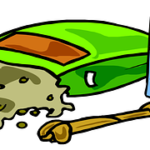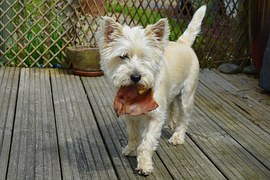Choosing healthy foods for dogs and cats sounds easy but can become a touchy subject. Many people buy a certain brand of food because they’ve done so for years. Perhaps their parents before them bought that brand. Whatever the reason, they become attached to it and reason that if their dogs and cats like it, it must be great. One pet parent argued with me after she read my review of a less than stellar brand of dog food. She insisted I was wrong and her dogs were the proof. They were healthy and “that” was the only food they ate.
But just because a brand is popular and your pet doesn’t become ill on it doesn’t mean dogs and cats should eat it. I like a popular brand of corn chips, but I don’t eat them every day as my only meal, because it isn’t good for me. My grandmother ate the same food for supper every night for years: A Pepsi and Chicken N Biscuit crackers. In no universe would that have been considered healthy! Dogs and cats like their “junk” food, as well. We humans need to know and understand pet food labels and not feed them foods containing unhealthy ingredients.
Read & Understand the Ingredients Label
 Can you decipher the ingredients label on that bag of dry pet food? Or which ingredients carry the most weight? Are you aware how many popular pet food manufacturers include dogs and cats and other euthanized animals in their pet food products? If not, you owe it to yourself and your pets to find out that information. Get the scoop now on how dogs and cats end up as ingredients in pet food.
Can you decipher the ingredients label on that bag of dry pet food? Or which ingredients carry the most weight? Are you aware how many popular pet food manufacturers include dogs and cats and other euthanized animals in their pet food products? If not, you owe it to yourself and your pets to find out that information. Get the scoop now on how dogs and cats end up as ingredients in pet food.
What Are Rendered Ingredients?
Lower-priced dog and cat foods often contain such ingredients as meat meal, by-products, animal fat, animal digest, or meat & bone meal. If so, you should know that Fido and Fluffy may have been cooked in that food. Pet food manufacturers purchase a variety of ingredients to go in their products from suppliers. For example, one supplier may produce only chicken meal, and a manufacturer may buy the chicken meal they use in their products from that company. If the product contains a named meal such as chicken, that means only chicken was cooked in a rendering vat to make that meal. However, if a pet food company buys a mix of ingredients in meal form, that food could be labeled “meat meal.”
There is no way for the consumer to know what exactly meat meal contains. Dogs and cats need pure meat in their diets. Those other previously mentioned ingredients, animal fat, by-products, animal digest and meat & bone meal, also derive from that rendering process Here is how it works:
How Rendered Pet Food Could Contain Dogs and Cats
Rendering companies contract with supermarkets, restaurants, veterinary clinics, zoos, farms, etc., to pick up waste items from them on a regular basis. The rendering trucks go to the restaurants under their contracts and pick up large containers of old fat/grease that restaurants store outside in all kinds of temperatures for weeks or months at a time. The trucks visit contracted supermarkets and pick up containers of their outdated meats. Then they may drive to vet clinics, where they load up any euthanized dogs and cats or other pets and throw them into the trucks.
After carrying out the same process at zoos or farms, the trucks head back to the rendering company to dump their loads. Everything they collected goes into large vats and rendered. No, they do not remove plastic or styrofoam from the old, rancid meat. No, they do not remove collars and tags from the dead pets. Everything goes into the rendering vat.
Truck drivers referred to as “wildcatters” work independently and sell their contents to various rendering companies. While they may contract with similar businesses like vet clinics, supermarkets, restaurants or such, they also pick up road kill from highways. Those independent drivers deliver their day’s collection to a rendering company. Whatever they collected goes right into the same vats that make ingredients for pet food.
How Do Barbiturates End Up in Pet Food?
After the contents of said vats cook at extremely high heat to kill all the bacteria, the high heat reduces the contents to a powdery form. Eventually, the powder becomes pet food kibble. Now, you may think that the high heat that kills bacteria also kills off any other problems, but not necessarily.
When euthanizing animals, veterinarians usually administer Pentabarbitol to do the deed. Those animals may well end up in a rendering vat to make pet food. The rendering process does not kill off the Pentobarbital. The Food & Drug Administration confirmed this is allowed and approved. An interesting article on this subject may be found here.
Petmd.com also wrote about barbiturates in rendered pet food here.
More proof that dogs and cats could be cooked in pet food came from then president of AAFCO in a news interview. Hersh Pendell admitted that the consumer has no way to know if the protein used in, say, meat & bone meal is cattle or “Fluffy.” View the interview on the link and decide for yourself. Mr. Pendell, a former president of AAFCO, clearly makes his point that some pet food could contain dogs and cats. AAFCO writes ingredient definitions and suggests nutritional guidelines for pet food manufacturers to follow.
Pesticides and Pet Food
Farmers routinely spray their livestock with pesticides. Whatever residual pesticide the farmer previously sprayed on the animal before it died or was euthanized, may remain.
 The only way to be certain that the dog or cat food you buy does not contain such things is to avoid pet foods containing these ingredients: meat meal, meat & bone meal, by-products, animal fat, and animal digest. If you see a named meal like chicken meal or lamb meal on the ingredients list, rest easy. That package only contains rendered parts from a chicken. And it may well contain a higher protein count than fresh chicken.
The only way to be certain that the dog or cat food you buy does not contain such things is to avoid pet foods containing these ingredients: meat meal, meat & bone meal, by-products, animal fat, and animal digest. If you see a named meal like chicken meal or lamb meal on the ingredients list, rest easy. That package only contains rendered parts from a chicken. And it may well contain a higher protein count than fresh chicken.
Even Popular Brands May Contain Harmful Ingredients
Some popular pet foods that contain one or more of those forbidden ingredients include:
Purina Dog Chow® – contains poultry by-product meal (Never feed your pet by-products of any kind!), animal fat, meat & bone meal, and animal digest.
Beneful Originals® – contains chicken by-product meal, poultry by-product meal and poultry and pork digest.
Purina One® Tender Selects with Real Chicken (for cats) – Sounds great but it contains poultry by-product meal and animal fat.
Purina® Friskies Indoor Delights® – contains chicken by-product meal and meat & bone meal.
Purina® Kit & Kaboodle® Cat Food – contains meat & bone meal, animal fat, chicken by-product meal, and turkey by-product meal.
Bil-Jac® Large Breed Adult Dog Food – contains chicken by-product meal.
Ol Roy Dog Food – Walmart’s own brand and contains animal fat and poultry by-product meal.
This small sampling of pet foods on the market containing rendered ingredients may well include cooked dogs and cats. No one knows for sure. Even popular brands aren’t always the best for your pet. Each of these foods contain other unhealthy ingredients, but that is for another article. If you would like more information on choosing healthy food for your dog or cat, click here. Take good care of your pets and feed them the best pet food your budget will allow.
